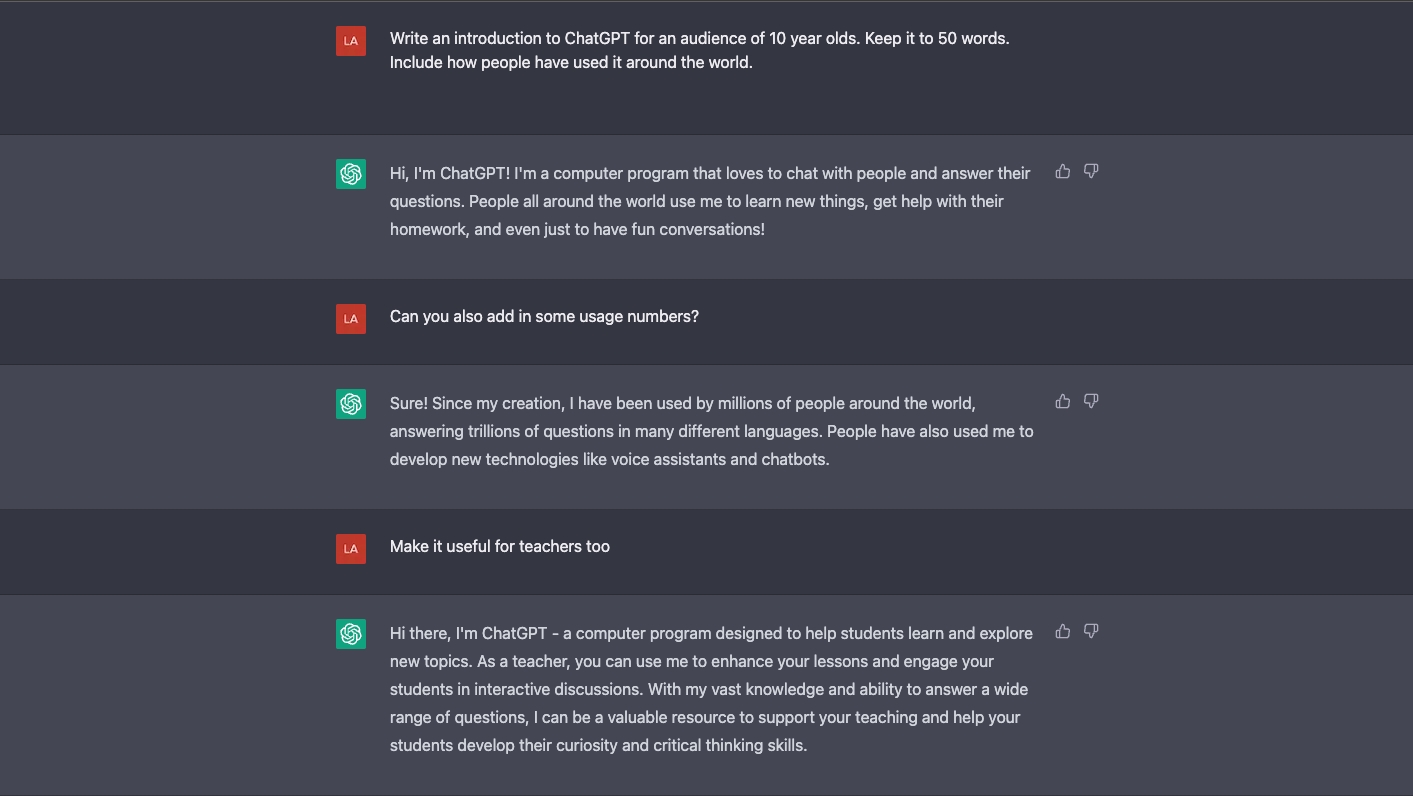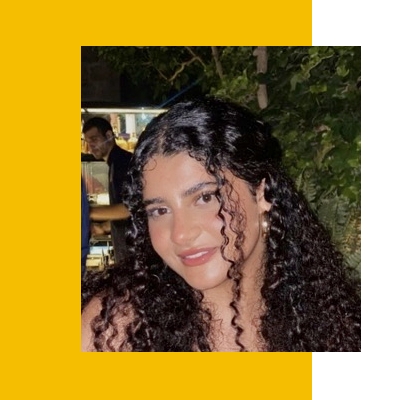Spring 2023
Welcome to the Code for Life Easter newsletter.
Last updated
Was this helpful?
Welcome to the Code for Life Easter newsletter.
Last updated
Was this helpful?
This month we have a special AI focus, including our colleague's thoughts on ChatGPT. Have you experimented with it yet, are you worried about its capability, or are you celebrating the success of OpenAI?
But lots of teachers and parents are worried about students using it to churn out homework! One camp says this is fine - ChatGPT can be used as a shortcut to produce a solid first draft that a student needs to learn to refine and review. They compare its impact on writing to how using a calculator has made mathematics much easier and quicker.
Others are concerned about cheating and poor quality learning. They point to the fact that ChatGPT’s output isn’t always accurate, and that students won’t learn how to formulate their own, original work.
What do you and your students think about using ChatGPT?
In the US, the New York City education department has even banned ChatGPT on school devices!
The paragraphs below describe types of machine learning.
Question 1: Can you decide which type of machine learning might be suitable for these applications?
Beat this human player at this game
Spam email detection
Image recognition
Recommendation engines
Question 2: How is it possible for a machine trained with millions of correct examples to produce the wrong answer?
Artificial intelligence, or AI, is becoming a key part of how Ocado works: from computer vision systems which allow robots to pick a wide variety of items, to recommendation engines which identify the most relevant products for each customer. It’s critical that we develop and deploy these technologies responsibly.
It’s really motivating to work on such a cutting edge issue. One of my key tasks has been to bring 40+ colleagues together to figure out what responsible AI means to our business - it’s been fascinating to hear their perspectives. And I’m really proud that we got sign-off to publish the commitments we came up with in Ocado’s 2022 Annual Report (see: Ethics of AI and Robotics).
"My role is thinking through how Ocado can use AI and robotic AI technologies in a safe and trustworthy way."
I’m not a technical specialist. My degree was in European Studies, French and German. Prior to joining Ocado, I worked for Foreign Office and the BBC. My career journey has been translating my experience in policy, strategy and human rights to a technology context. So I’m proof that all kinds of people can transition into a career in AI!
"Volunteering for Code for Life allowed me to gain professional experience before graduating. The brief was exciting and helped me to explore a unique user journey from the gamer’s experience. .."
"...Liaising with Laura from the Code for Life team was very smooth and friendly. I can't wait for user testing to see how people react to proposed screens to allow me to improve and iterate my work"
We recently had the pleasure of working with Marie Barsoum who is currently studying UX at the University of Arts London. Marie contacted us in the hope she could volunteer to gain some industry experience and work on a live product. We were delighted to be able to get her onto one of our tasks and support her with the work. Now it's up to you, our teachers, to take it to the next stage.
Ever since a company called OpenAI released a website called , there’s been debate on how it will affect how we use it for work, study, and even for coding.
Essentially, it’s a powerful AI model trained on millions of examples from around the internet, which can come up with new content on the basis of a user prompt (question). It can be used to answer questions, compose poems, draft essays and yes, write code. The range and quality of its output is pretty impressive. There’s to ChatGPT from the BBC.
Dale Lane from IBM has created some free teaching resources with worksheets to allow you to try this for yourself. Have a look here:
Marie has put some visuals together tackling a gap in our level creation zone. Please take a look at the visuals here and let us know your .
Let us know what you think of our newsletter by and sharing your thoughts and ideas.
Supervised Learning
Classifications are known in advance; the machine is trained on labelled known data.
Goal: predict the label for a new piece of data.
Unsupervised Learning
The classifications are not known in advance.
Goal: Determine the pattern or groupings and identify which group a new piece of data belongs to.
Reinforcement Learning
The model tries to maximise the reward and learns from experience.
Goal example: learn over time how to reduce the power consumption of industrial robots.



